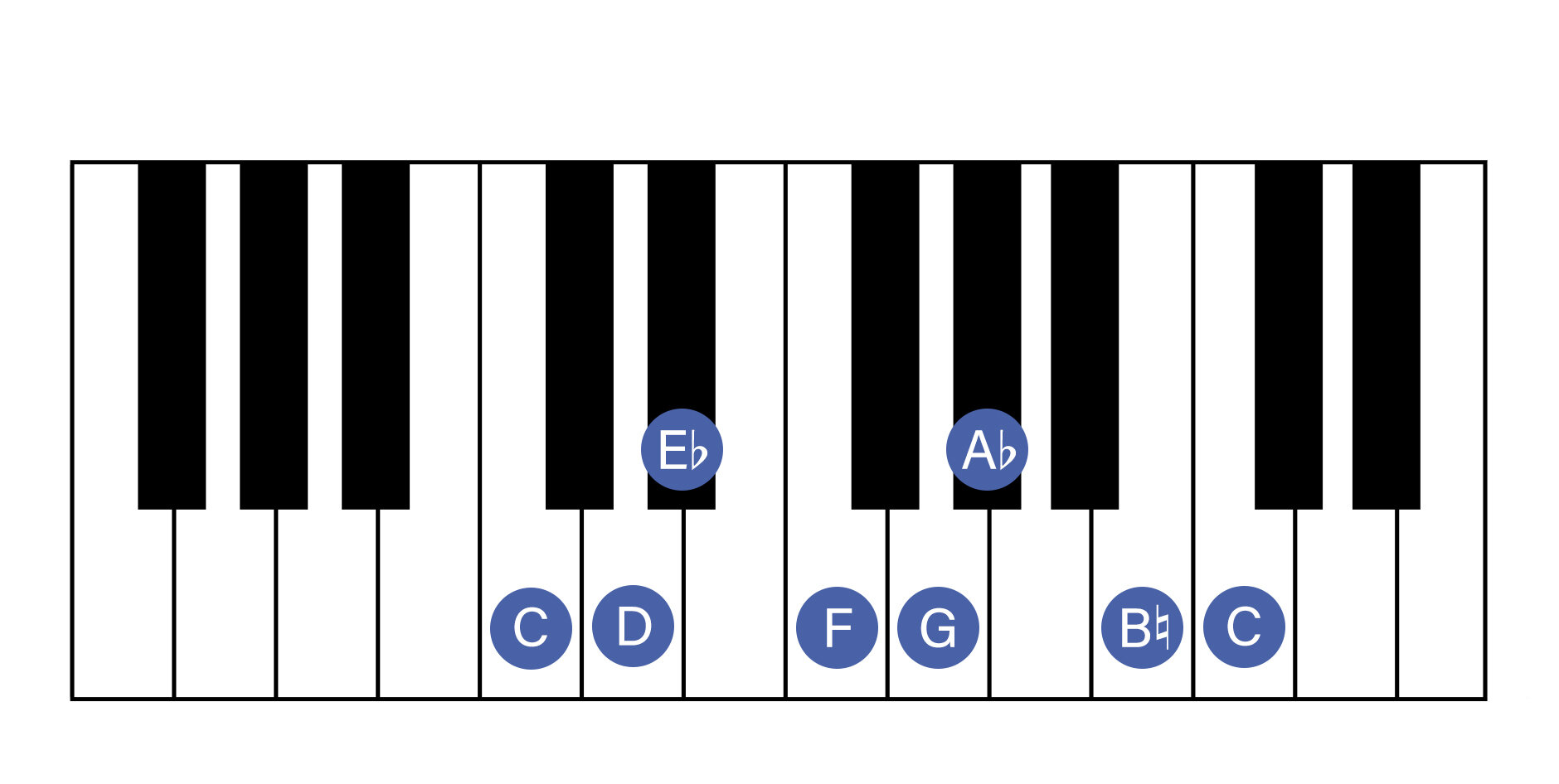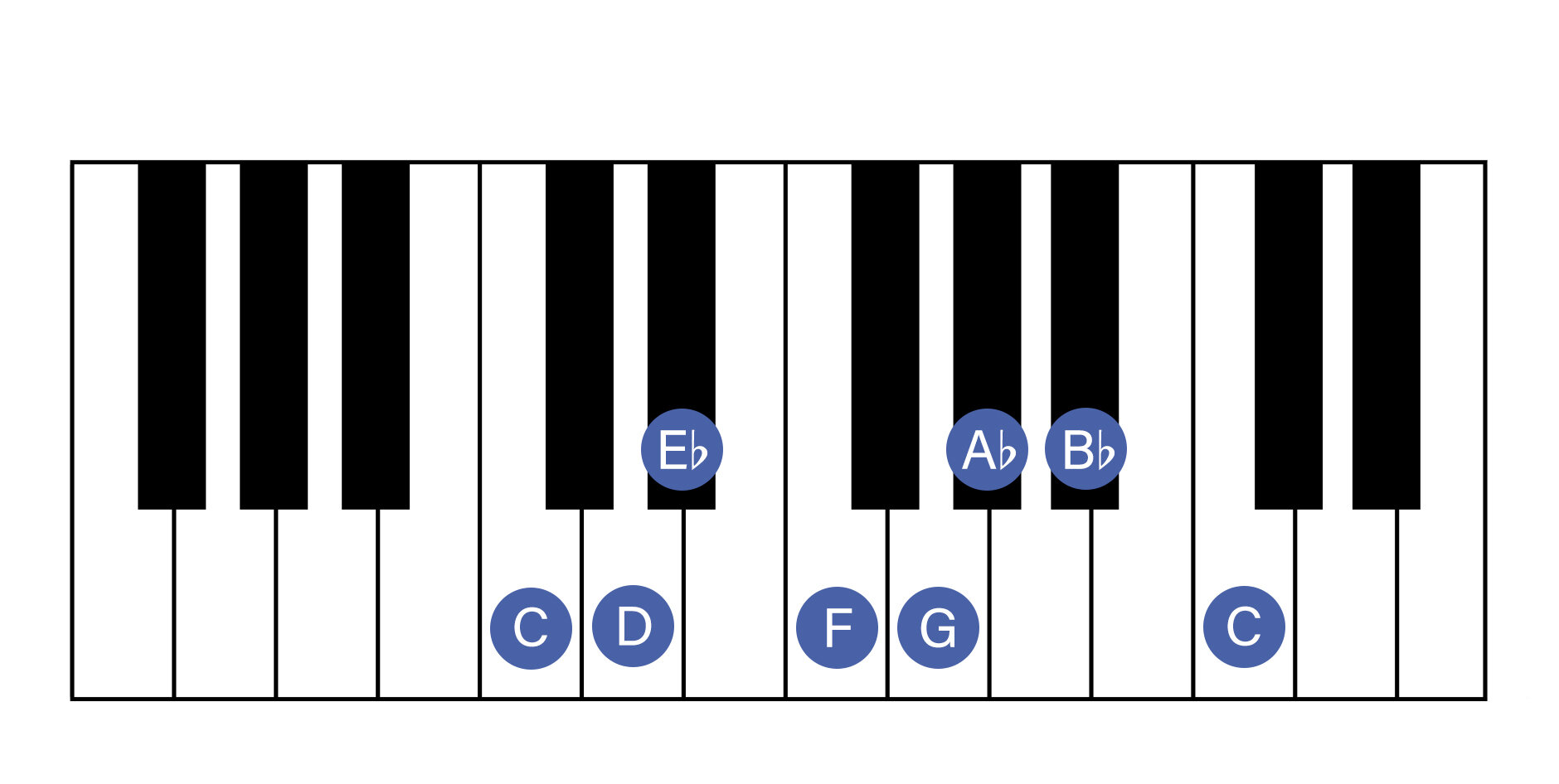Introduction
After learning the Major Scale and the Chromatic Scale, it’s a good idea to familiarize yourself with some of the important Minor Scales. Some of the most common Minor Scales used in Western Music, including Classical Music, Jazz, Rock, and Pop, are the Natural Minor Scale, the Harmonic Minor Scale, and the Melodic Minor Scale.
Parallel and Relative Scales
Relative Scales
A scale can be called Relative to another scale when the two scales Start on Different Notes but they Contain All the Same Notes. The C Major Scale and the A Natural Minor Scale are Relative Scales. They contain all the same notes, but C Major starts on C and A Natural Minor starts on A. Relative Scales are sometimes called Derivative Scales.
C Major Notes: C D E F G A B (C)
A Natural Minor Notes: A B C D E F G (A)
Parallel Scales
A scale can be called Parallel to another scale when the two scales Start on the Same Note but they Contain One or More Different Notes. The structure of each minor scale can be illustrated by starting with the Parallel Major scale and adding Accidentals. Accidentals are sharps (#) or flats (b) that modify a note. The C Major scale and the C Natural Minor scale are Parallel scales.
C Major Notes: C D E F G A B (C)
C Natural Minor Notes: C D Eb F G Ab Bb (C)
Parallel Scales in Relation to the Major Scale
A scale can be understood by looking at its Scale Degrees in relation to the Major Scale. Here we will be looking at Parallel Scales that start on the same note as the Major Scale. Instead of using the note names to illustrate the scale structure as above, we will be using Scale Degrees. A Scale Degree is basically a number that is assigned to each note of a scale.
To show the relation of the Parallel scale to the Major Scale, the Scale Degrees of the Major Scale are altered with accidentals to match the form of the Parallel scale. By using Scale Degrees instead of note names, we can view the scale structure as it would relate to any of the 12 Major scales.
Below are some examples using Modes of the Major Scale in relation to the Major Scale. The Modes of the Major Scale are explained in my discussion of Basic Jazz Scales. Here, I am just using them as an example of how the scale structure of these Modes differs from the Major Scale pattern.
Note Names with Added Accidentals
C Major Notes: C D E F G A B (C)
C Lydian Mode Notes: C D E F# G A B (C)
C Mixolydian Mode Notes: C D E F G A Bb (C)
Scale Degrees with Added Accidentals
Major Scale Degrees: 1 2 3 4 5 6 7 (1)
Lydian Mode Scale Degrees: 1 2 3 #4 5 6 7 (1)
Mixolydian Mode Scale Degrees: 1 2 3 4 5 6 b7 (1)
The Natural Minor, Harmonic Minor, and Melodic Minor Scales
The Natural Minor Scale
The Natural Minor scale is one of the most important minor scales. The Natural Minor Scale Degrees in relation to its Parallel Major scale are shown below.
Scale Degrees: 1 2 b3 4 5 b6 b7
The Natural Minor scale in the Key of C Minor is shown below in the diagram of the piano keyboard.
The Harmonic Minor Scale
The Harmonic Minor scale is another fundamental minor scale. The Harmonic Minor scale is the same as the Natural Minor scale, except that the 7th Scale Degree is raised by a Half Step. When the 7th scale degree is a Half Step below the Tonic Note (the first scale degree), it’s called the Leading Tone. It’s called the Leading Tone because it tends to Resolve by Half Step to the Tonic Note. The Harmonic Minor Scale Degrees in relation to its Parallel Major scale are shown below. The Harmonic Minor scale in the Key of C Minor is shown below in the diagram of the piano keyboard.
Scale Degrees: 1 2 b3 4 5 b6 7
The Melodic Minor Scale
The Melodic Minor scale is another fundamental minor scale. In western classical music, the Melodic Minor scale has two forms: the Ascending Form and the Descending Form.
The Ascending Melodic Minor scale form is the same as the Major Scale, except that the 3rd Scale Degree is lowered by a Half Step. The Scale Degrees of the Ascending Melodic Minor Scale in relation to its Parallel Major Scale are shown below. The Ascending Form of the Melodic Minor Scale in the Key of C Minor is shown below in the diagram of the piano keyboard.
Scale Degrees: 1 2 b3 4 5 6 7
The Scale Degrees of the Descending Melodic Minor scale in relation to its Parallel Major scale are shown below. The Descending Form of the Melodic Minor scale in the Key of C Minor is shown below in the diagram of the piano keyboard. The Descending Melodic Minor Scale Form is identical to the Natural Minor scale.
Scale Degrees: 1 2 b3 4 5 b6 b7
The Jazz Melodic Minor Scale
In Jazz, the Melodic Minor scale only has one form. It is the same whether is it played upward or downward.
The Scale Degrees of the Jazz Melodic Minor scale in relation to its Parallel Major scale are shown below. The Jazz Melodic Minor scale in the Key of C Minor is shown below in the diagram of the piano keyboard. The Jazz Melodic Minor scale is the same as the Major Scale, except that the 3rd Scale Degree is lowered by a Half Step.
Scale Degrees: 1 2 b3 4 5 6 7
Get in Touch for Piano Lessons or Tutoring
If you’re inspired to learn more about minor scales, the piano, or music theory in general, feel free to reach out at your earliest convenience. You can sign up for piano lessons in White Plains, piano lessons in Westchester County, or online piano lessons.





